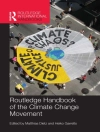Heavily grounded in helping students make the best choices for their projects, this book explores how to develop and work with theory, research questions, and method selection to build solid, logical proposals and move from research concepts to fully realized designs.
Rather than rushing initial planning stages or reverse engineering questions from preferred methods, it encourages students to challenge unconscious biases around method selection and analysis and provides step-by-step guidance on choosing a method that is in-line with the question being explored. Focused on the role of the researcher within research design, it stresses the need to consider the theoretical underpinnings of research and not just practical issues when designing a project.
It provides a sophisticated toolkit to understand:
– The critical issues associated with both qualitative and quantitative methods
– The approach that works best for specific research questions
– How design choices can affect practice.
Perfect for upper undergraduate and postgraduate students, this book will instil confidence and good decision making to ensure constructively informed design and practice.
Table of Content
Chapter 1: Introduction: the Basics of Social Science Research Designs
Deductive and inductive research
Explanatory and interpretative research designs
Deductive, explanatory research designs and their core components
Research design choices: x-centered and y-centered projects
Quality criteria for social science research
Chapter 2: Detecting Puzzles and Selecting Good Research Questions
Research questions’ essentials
How to find empirical puzzles and select a good explanatory research question
Feasibility
How to make choices: selecting good research questions
Chapter 3: Working with Theories
Why do we need theories for explanatory social science projects?
Selecting theories: how many and which ones do we need?
Working with theories: how to develop and select hypotheses?
Making choices: which and how many theories and hypotheses to use?
Chapter 4: Qualitative, Quantitative, and Mixed-Method Projects—How to Make the Choice
Advantages and disadvantages of quantitative and qualitative projects
Mixed-method combinations: Advantages and challenges
Qualitative, quantitative and mixed-method projects – How to make a choice?
Chapter 5: How to Select Cases
What is a case?
Case selection: An essential task for comparative research
How many and which cases should be selected?
Making choices: How to select cases?
Chapter 6: Making Choices between Methods of Data Collection
The measurement of variables
Overview of data sources and methods of data collection
Databases and compendiums
Primary Sources: Documents
Interviews
Surveys and questionnaires
Focus groups
Participant observation
The importance of triangulation
The importance of data management
Summary – Choices on data collection
Chapter 7: Making Choices between Qualitative Methods of Data Analysis
Types of Comparisons in Qualitative Case Studies
Process-tracing
Summary: Choosing between methods of qualitative analysis
Chapter 8: Making Choices between Quantitative Methods of Data Analysis
Detecting variable types and describing variables
Choosing between linear and logistic regression analysis
Choosing between advanced methods of quantitative data analysis
Chapter 9: Making Choices in Writing and Sharing Research
Writing techniques
Disseminating research outputs
About the author
Since 2012 Diana Panke is Professor of Political Science and holds the Chair in ‘Multi-Level Governance’ at the University of Freiburg. Previously she worked at the University College Dublin, the Free University Berlin and the University of Heidelberg. She specialized in International Relations, Comparative Regionalism, and Social Science Research Methods. Her research interests include international negotiations, small states in international affairs, multilateral diplomacy, international norms, the design of international institutions, European Union politics as well as compliance and legalization. In these fields, she has published journal articles in a variety of outlets such as Review of International Organizations, International Political Science Review, European Journal of International Relations, British Journal of Politics and International Relations, Comparative Political Studies, Cooperation and Conflict, Journal of Common Market Studies, Journal of European Public Policy, Journal of European Integration, International Relations, or International Politics. Her books have appeared with Palgrave, ECPR Press, Manchester University Press, and Ashgate.












